In todays article, Friedrich Seiltgen describes Americas disc-shaped airplane: the Vought V-173 Flying Pancake.
This design was a lifting body with a short span that made up the aircrafts fuselage.
Zimmerman built a proof-of-concept aircraft, but it was underpowered and never flew.
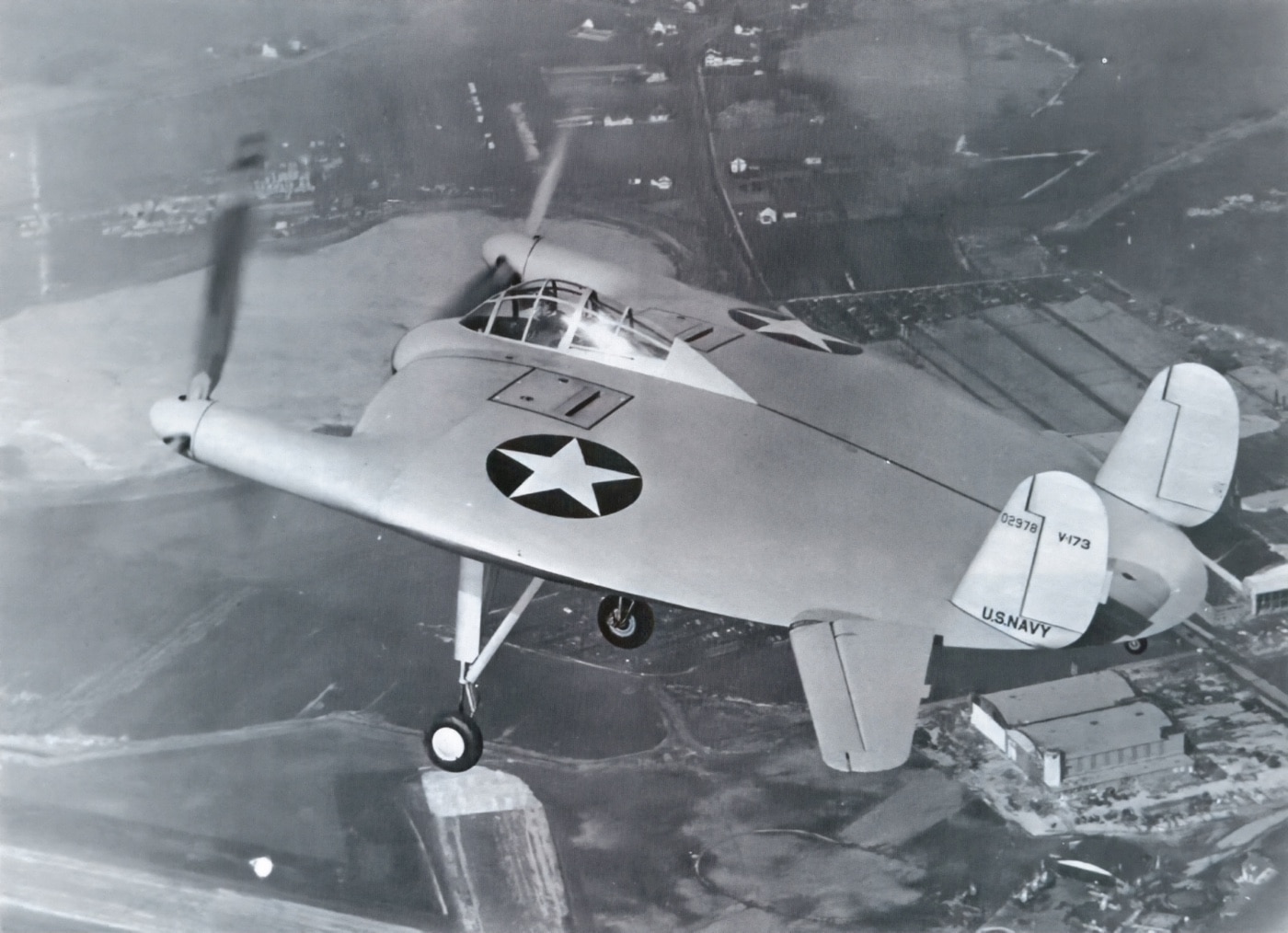
The Vought V-173 Flying Pancake during a December 1942 test flight. Conceived in the 1930s, the experimental plane held a great deal of potential, but did not develop into a successful platform.
The original prototype was designated the Vought V-173.
The majority of the aircraft was constructed of wood and covered with canvas.
It was powered by two C75 Continental 80-horsepower engines.
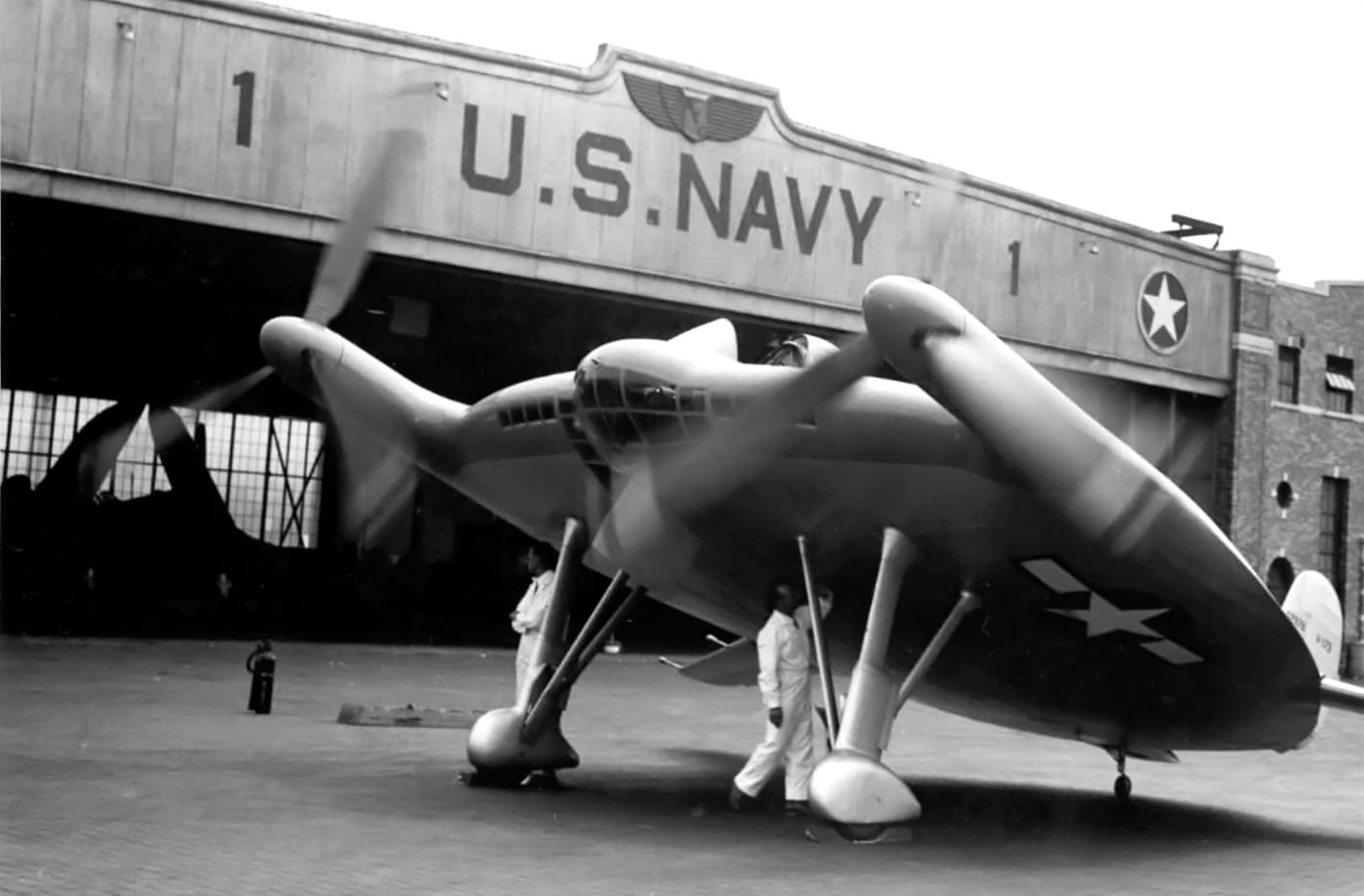
The Vought V-173 is prepared for testing. The United States Navy was interested in the design due to its flight characteristics that made it a good fit for the aircraft carriers of World War II. Image: U.S. Navy
The V-173 used two vertical stabilizers at the rear of the aircraft.
It was definitely a unique look.
Voughts chief test pilot, Boone Guyton, was in the cockpit.
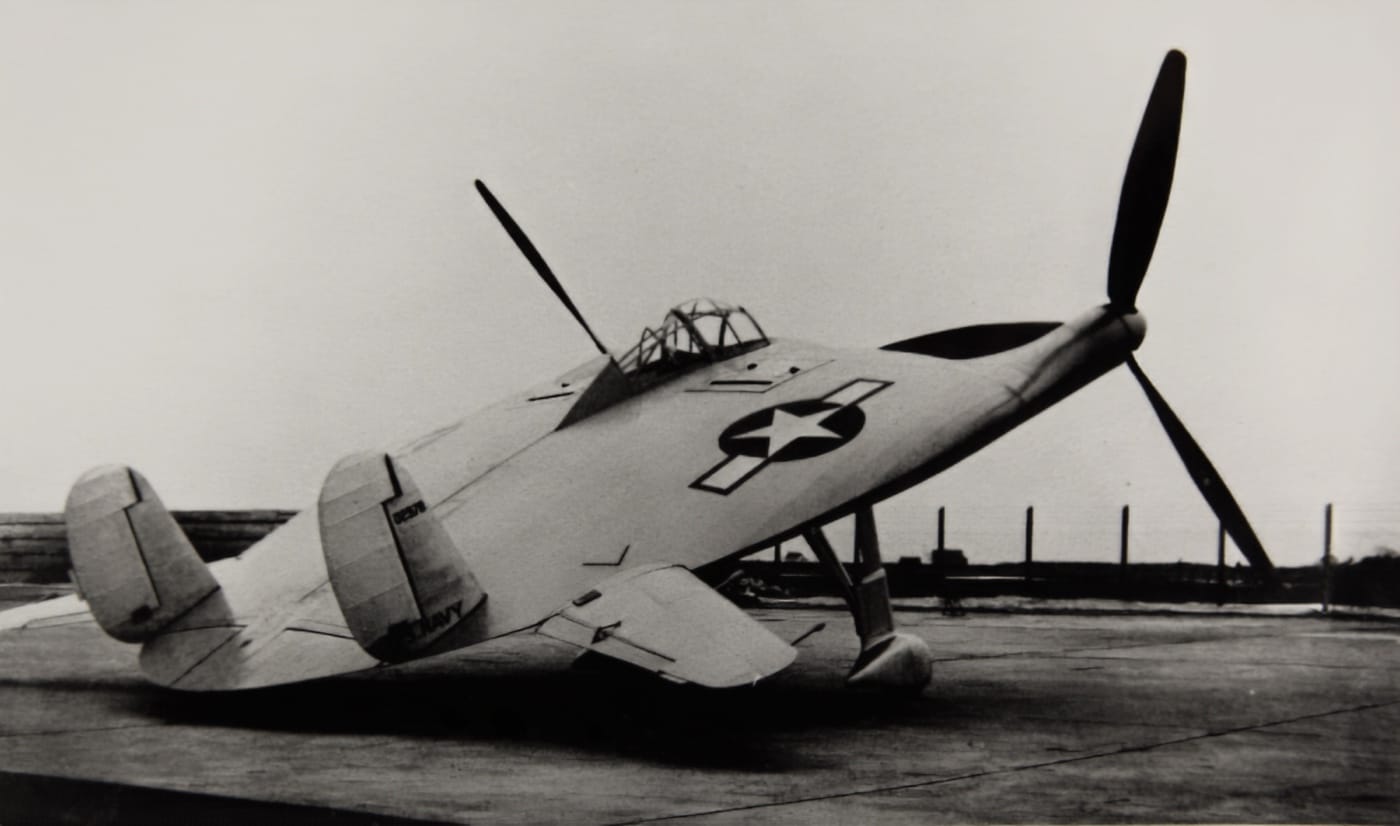
The Vought V-173 had fixed landing gear that gave the plane a significant nose up angle when on the ground. This angle worked very well with the plane’s aerodynamic design. Image: NARA
Guyton landed after a 13-minute test flight, and the debrief began.
It caused months of delays in the aircrafts development which had pushed back the first test flight.
Guyton also had issues with the cockpit.
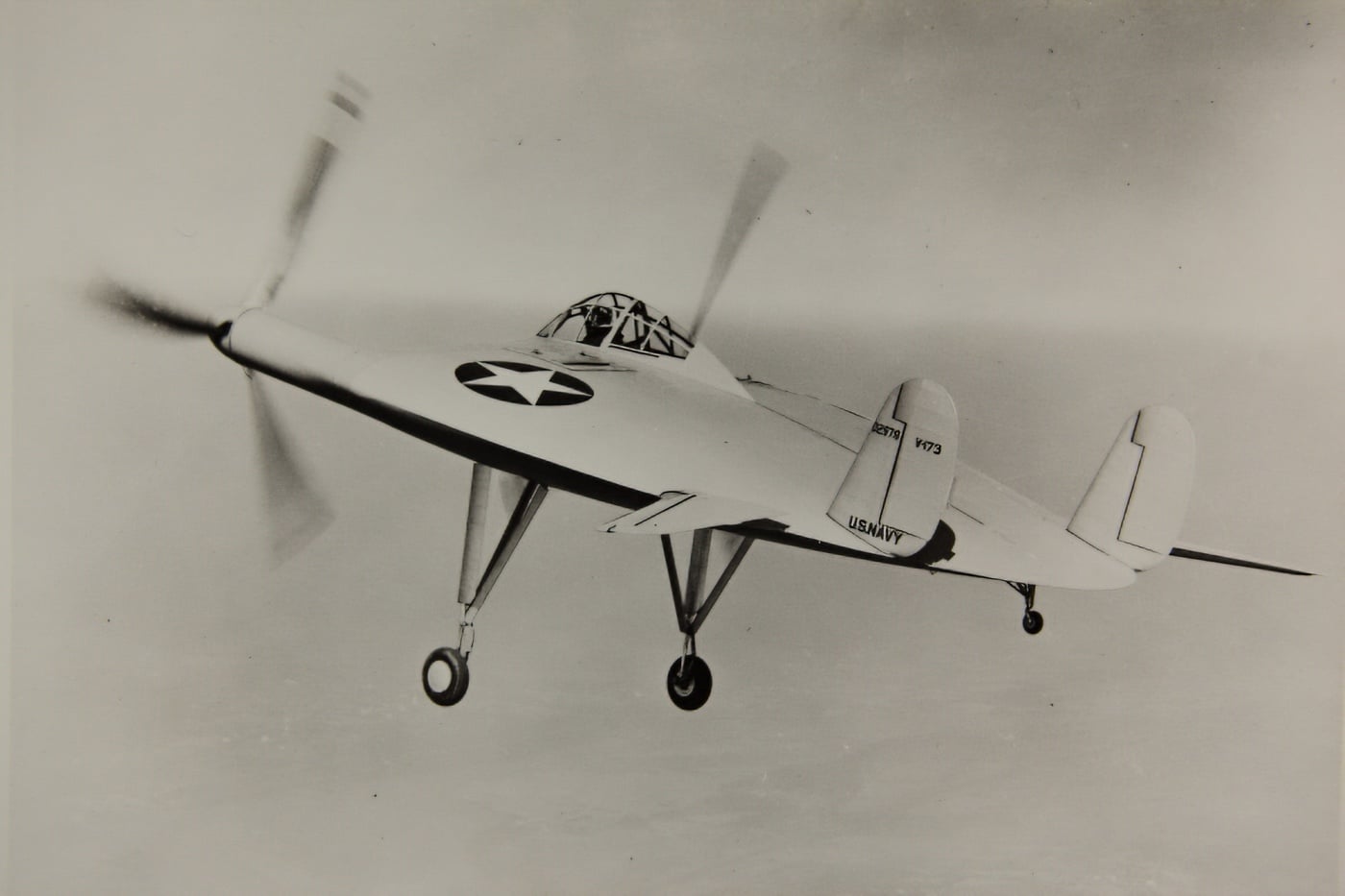
While the fixed landing gear gave the plane an ungainly appearance, the aerodynamics were sound on the Vought V-173. Image: United States Navy
Another major issue was air getting trapped under the aircraft during the landing approach, forcing the tail up.
The aircraft was also flown by Charles Lindbergh, who was impressed by its low-speed capabilities and easy handling.
Both Lindbergh and Guyton discovered that they were almost unable to stall the aircraft.
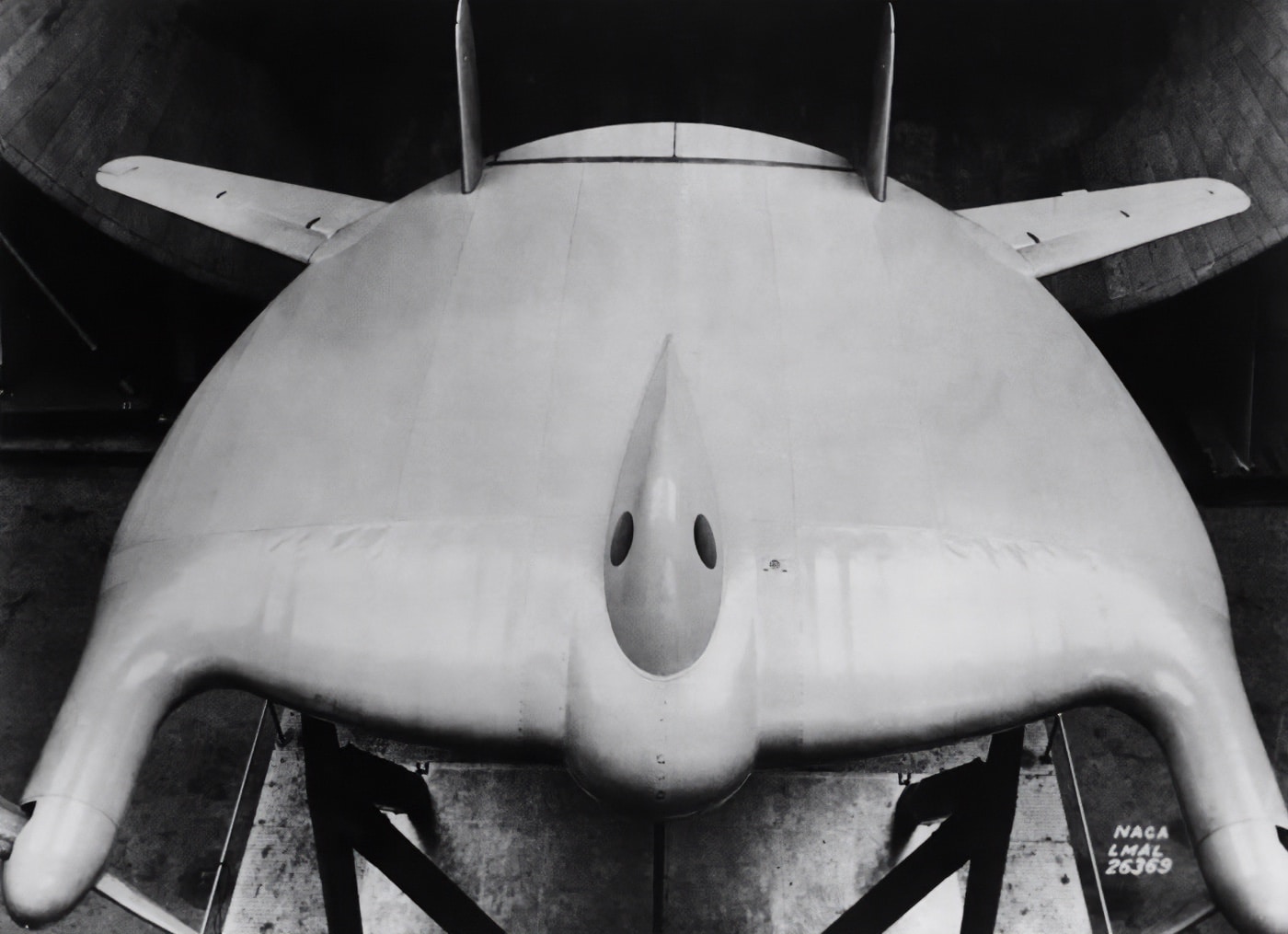
A Vought V-173 mockup undergoes wind tunnel testing by the National Advisory Committee for Aeronautics (NACA). This was the predecessor agency to the modern day NASA. Image: NASA
Burroughs braked hard to avoid hitting him, and the pancake flipped over on its back.
Fortunately, both Burroughs and the aircraft were uninjured.
The project moved on to the next phase with the XF5U, also known as The Flying Flapjack program.
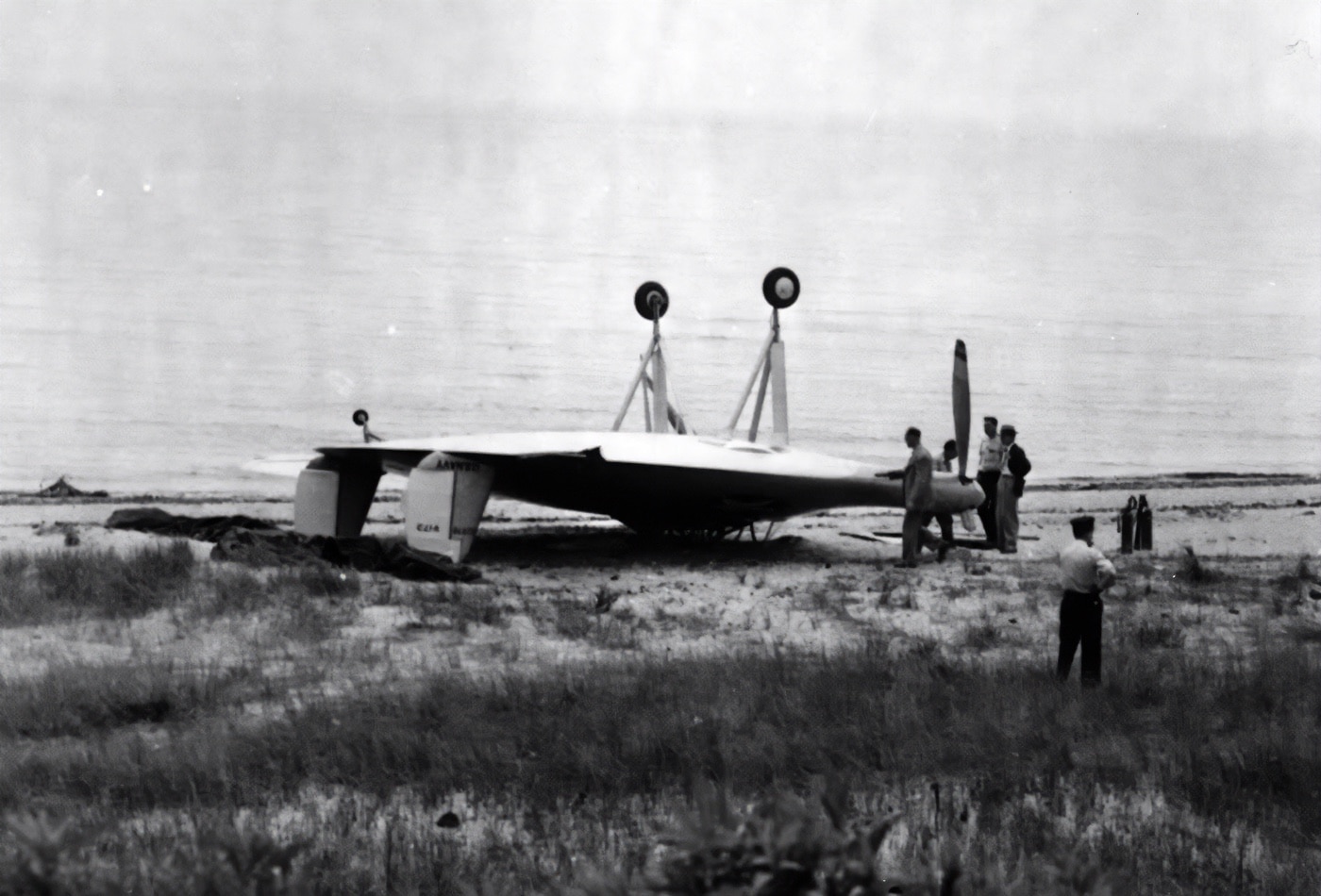
Although the Vought V-173 crash did not injure the pilot or substantially damage the plane, the image of the crash is certainly dramatic. Image: NARA
Vought constructed a wooden mockup of the XF5U for inspection by the Bureau of Aeronautics in June 1943.
The XF5U was much improved when compared to the V-173.
The new plane was powered by two Pratt & Whitney R-2000-7 1,350 hp engines placed in the fuselage.
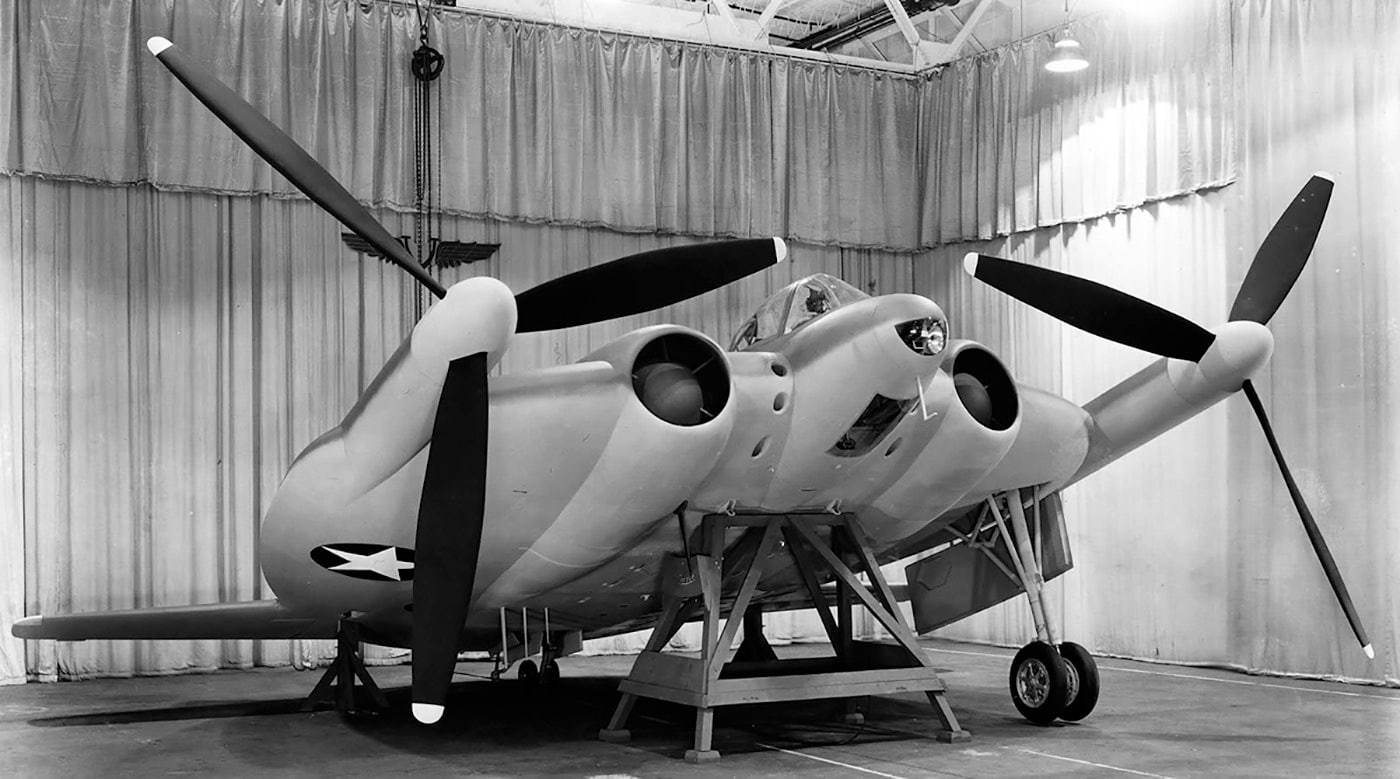
This XF5U mockup was finished in June 1943. It featured gun ports by the cockpit, three-blade propellers and single main gear doors — items that differed from the later prototype. Image: NARA
Further, it was equipped with retractable landing gear and a tail hook for carrier operations.
Unlike the purely experimental V-173, the XF5U was intended for development into a carrier based fighter.
Additionally, the plane was to have a pair of hardpoints underneath with a 1,000-pound ordnance capacity on each.
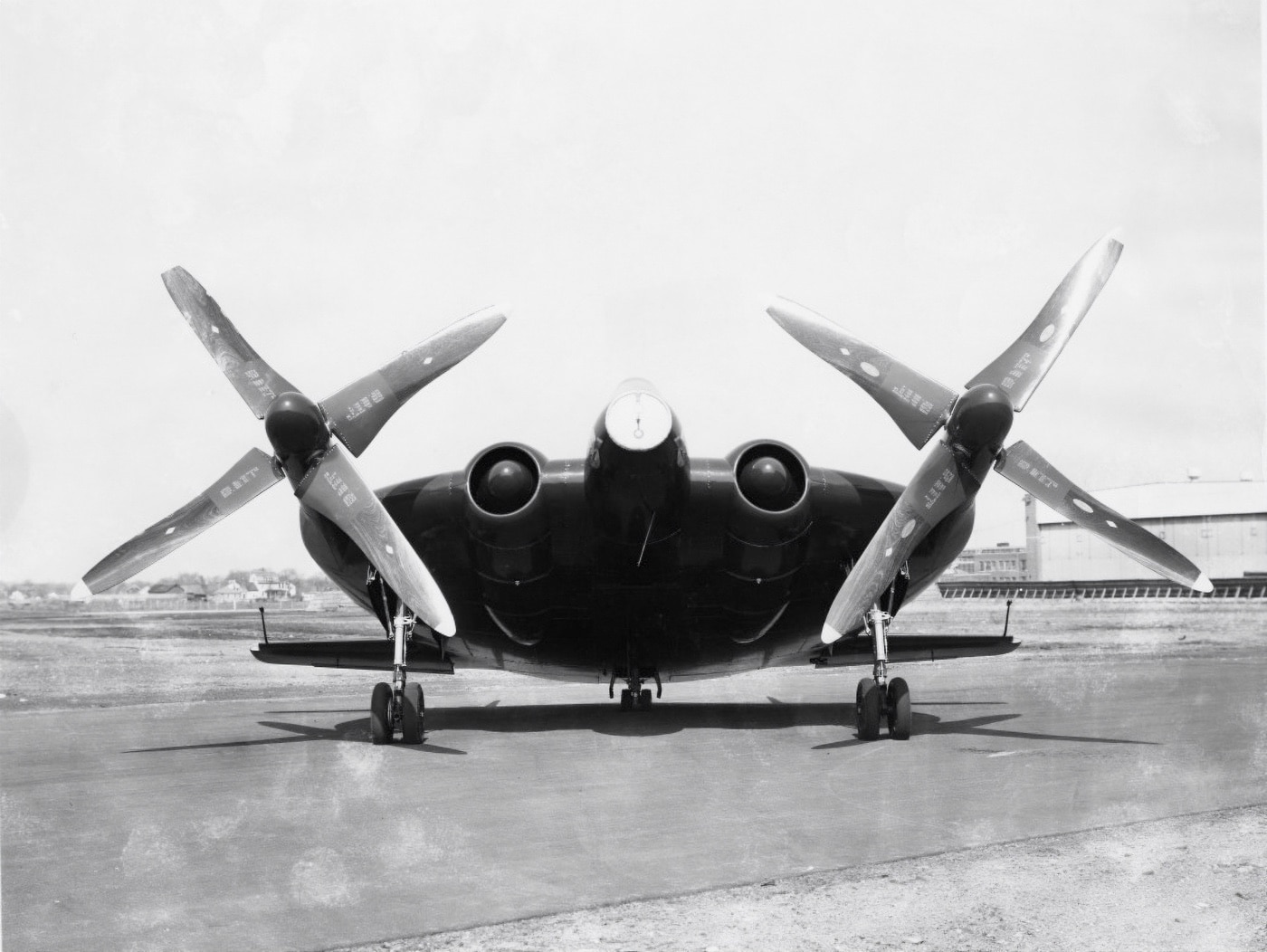
A front view of a Vought XF5U prototype on the runway. The original three blade propellers were scrapped in favor of a four blade design. Image: San Diego Air and Space Museum
As with the V-173, the landing gear was tall, and the aircraft had an 18.7-degree nose-up angle.
The XF5U only made a few short hops on the runway and never attained actual flight.
As WWII ended, the Navy faced decision-making time.
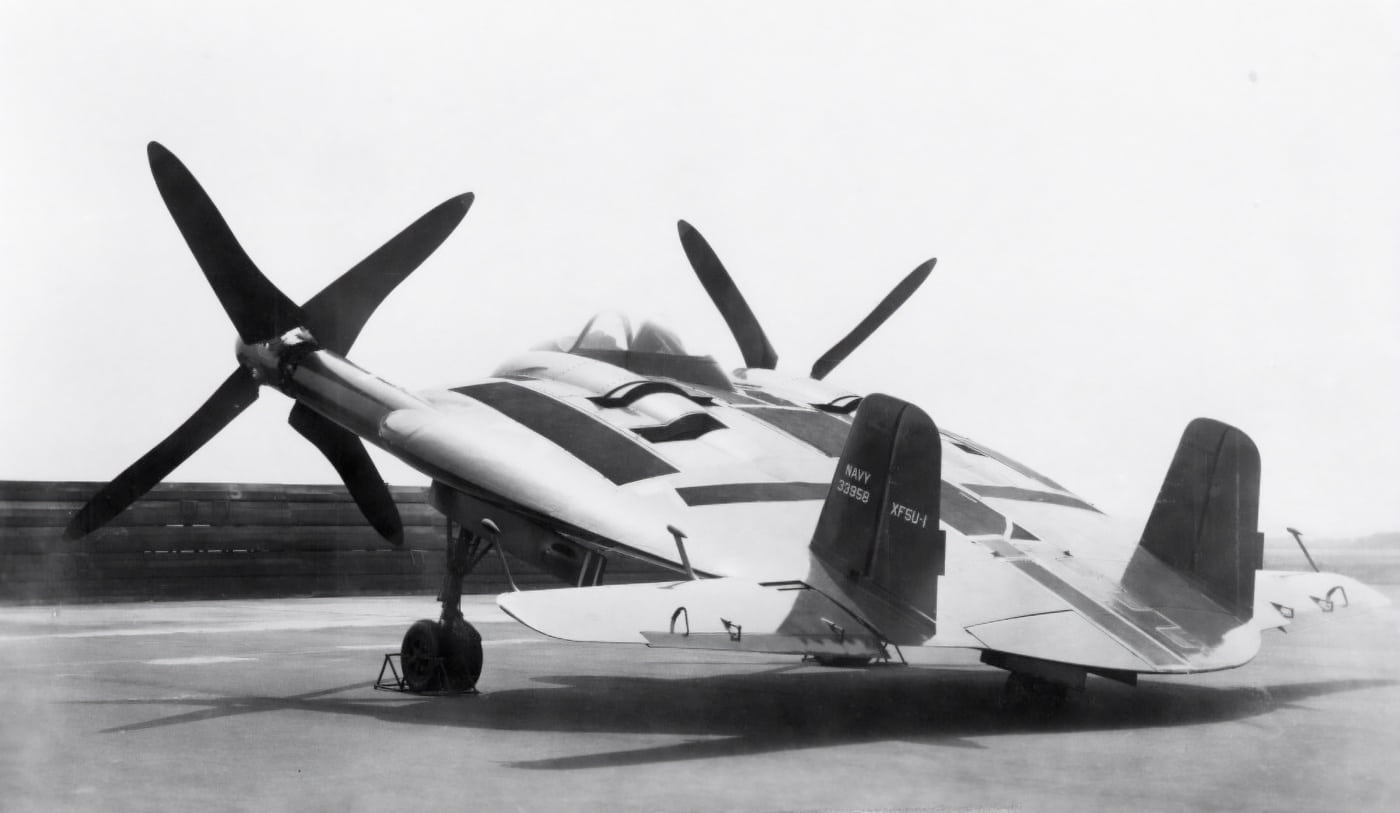
A rear view of the Vought XF5U on the tarmac during its development. It was intended to be a carrier-based fighter with bombing capabilities. Image: San Diego Air and Space Museum
Final Thoughts
The Vought V-173 was an unusual approach to the fundamentals of flight.
While the program was ultimately unsuccessful, it was certainly educational and expanded our understanding of flight dynamics.
Go to forum thread
Frontiers of Flight Museum
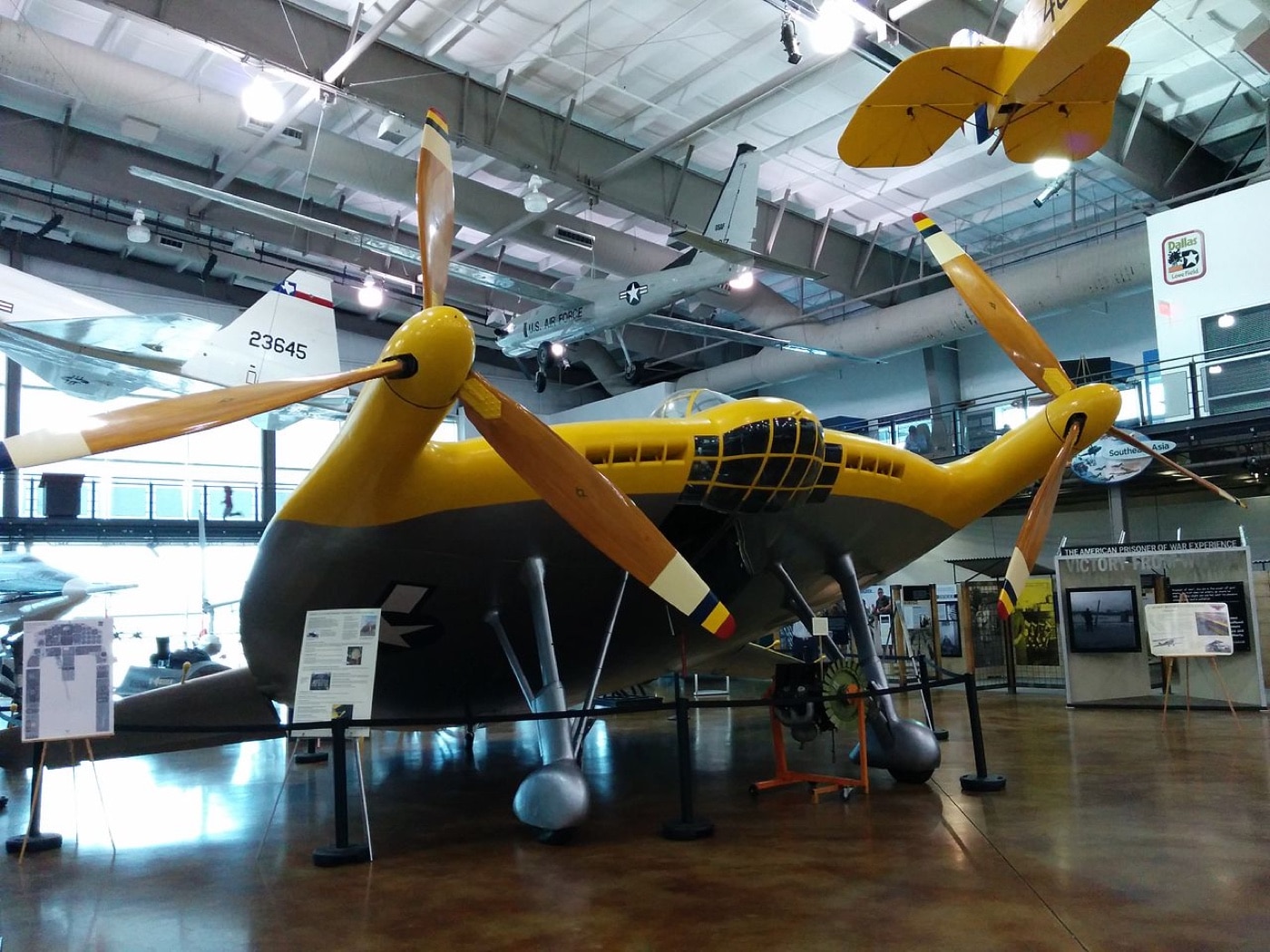
The restored Vought V-173 is on display at the Frontiers of Flight Museum in Dallas, Texas. Image: Eric Urban/CC BY-SA 4.0





